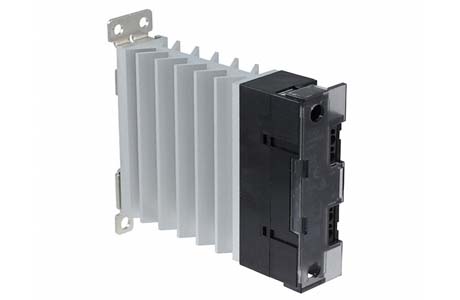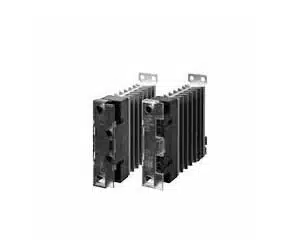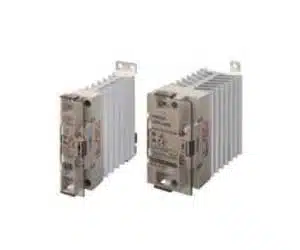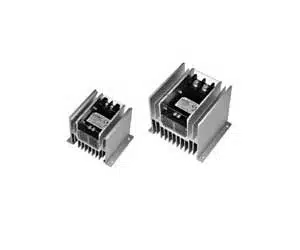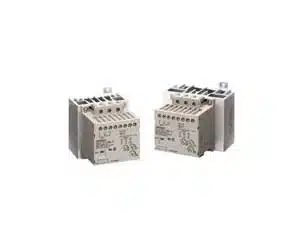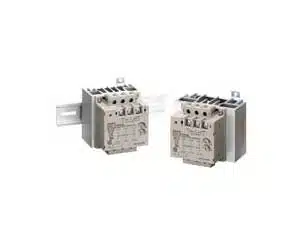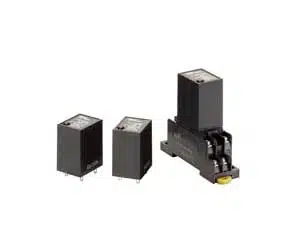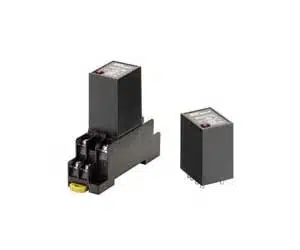Omron Solid State Relay: DC Output, 3 phase, 5V, 24VDC
Omron Solid State Relays are known for reliability. The regular Omron SSR works smoothly, and there’s a special 24vdc version for certain power needs. They offer great value for their price.
The 3-phase Omron relay is good for big jobs, while the 5v one suits smaller tasks. For any business or industry, Omron relays always perform well. Trust in our dedication to quality and innovation.
Omron Solid State Relay: G3PJ Series
The G3PJ Series Solid State Relays are slim, saving space. Designed for heaters, they have easy push-in terminals. They’re safe, meet standard requirements, and are ideal for compact control panels with multiple SSRs.
G3PJ Series
Omron SSR: G3PE (Single-phase) Series
These models are RoHS compliant, offer non-zero cross options, and meet UL, CSA, and EN standards. They’re TÜV certified, have enhanced surge protection, and are compact. You can mount them on DIN tracks or with screws.
G3PE Series
Omron SSR Relay: G3PH Series
These models follow RoHS guidelines and offer non-zero cross options. They have swappable power elements and meet both cULus and EN standards. Plus, they’re TÜV certified for added reliability.
G3PH Series
Omron Solid State Relay 24VDC: G3J-T Series
These devices function similarly to inverters, regulating start currents. They meet UL, CSA, CCC, IEC, and JEM standards. They feature an integrated snubber circuit and varistor, are compact, and can be screw-mounted or fixed to DIN tracks. They also have a built-in heat sink and operation indicator.
G3J-T Series
Omron Solid State Relay DC Output: G3J-S Series
This device smoothly starts motors, controlling the initial current like an inverter. It meets UL, IEC, and other standards, has a compact design with a heat sink (80x100x100 mm), and can be screw-mounted or attached to DIN tracks. It includes a snubber circuit, varistor, and operation indicator.
G3J-S Series
Omron 5V Solid State Relay: G3F/G3FD Series
When paired with the PFY-08-PU Push-In Plus Socket, wiring work is cut by 60%. These units match mechanical relay sizes and are UL, CSA, and VDE certified. They have an operation indicator and are similar in size to MY Power Relays.
G3F/G3FD Series
Omron 3 Phase Solid State Relay: G3FM Series
Omron’s relay supports micro-load switching from 1 mA to 500 mA. It handles both AC (19.2-264 VAC) and DC (19.2-125 VDC) without polarity concerns. Designed for optimal control of small loads, it matches the size and terminals of the MY Series and offers superior surge protection.
G3FM Series
People Also Ask
What is Solid State relay used for?
A solid-state relay (SSR) is a switch used in electronic circuits. Unlike traditional relays, it has no moving parts. This means it can switch faster and lasts longer.
SSRs are used to control large power loads with small control signals. For example, they can help turn on big machines using tiny switches. They are often found in industrial equipment, appliances, and lighting systems.
Because they don’t wear out like regular relays, they’re reliable for long-term use. In short, solid-state relays offer a durable and efficient way to control electrical power.
What is the voltage of SSR?
The voltage of an SSR (Solid-State Relay) varies based on its design. SSRs have two main voltage specifications: control voltage and load voltage.
The control voltage is the small voltage applied to turn the SSR on or off. It’s usually a low voltage, like 3V to 32V.
The load voltage is the larger voltage the SSR controls. It can range from a few volts to hundreds of volts, depending on the relay.
Always check an SSR’s specifications to know its correct voltage range. This ensures safe and proper operation.
What is the lifetime of SSR?
The lifetime of an SSR (Solid-State Relay) is long because it has no moving parts. Unlike mechanical relays, SSRs wear out less quickly.
Their lifespan is often measured in switching cycles. A typical SSR can last for millions of cycles.
However, the actual lifetime depends on usage and conditions. Overloading or overheating can shorten an SSR’s life.
Always follow the manufacturer’s guidelines to maximize the lifespan of an SSR. Proper use ensures a long and reliable performance.
What is the maximum frequency of SSR?
The frequency of an SSR (Solid-State Relay) refers to how fast it can switch on and off. Unlike mechanical relays, SSRs can operate at higher frequencies.
A typical SSR can switch thousands of times per second. However, the actual frequency depends on the specific SSR model.
Some high-speed SSRs can operate at even higher frequencies. Always check the manufacturer’s datasheet for exact values.
In short, SSRs can handle fast-switching tasks more efficiently than their mechanical counterparts.
Discover our selection and grab top deals on Omron Solid State Relay.

